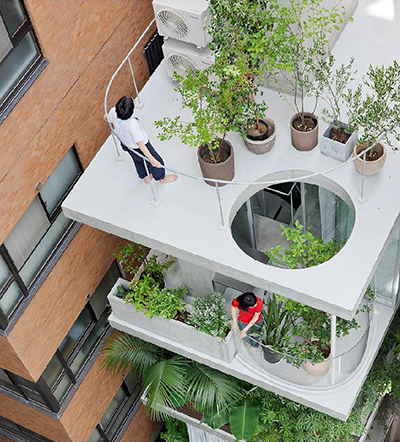
Garden and house, Tokyo, Japan, 2011. Office of Ryue Nishizawa.
If there’s any rule at all governing architecture today, it’s that anything goes. Advanced computer-assisted modeling and fabrication techniques make it possible to build highly complex shapes. Emerging economies and burgeoning cities demand super-sized structures. And there’s no lingua franca for architects working around the world: just about anything each one of them draws can be built. A new book, The Sky’s the Limit: Applying Radical Architecture, takes a closer look at some prominent avant-garde buildings from around the world and tries to puts a finger on what’s really going on. It’s no easy task.
This book classifies buildings according to their physical character: organic, sharp-edged, pixellated, interior, and outward-looking. While radially different from one another, each of these approaches can be understood as a form of resistance to the generic, commercial glass-box buildings that have come to populate our cities. There’s a movement towards gently swollen and rounded forms, expressed in a language similar to Zaha Hadid’s Acquatics Center for the 2012 London Olympics. There’s also a movement for modulated structures that have been broken into an array of smaller parts, like Frank Gehry’s Guggenheim Museum in Bilbao. Both these types of buildings reflect a yearning for more varied, surprising and sensual forms. In that sense they’re opposed to orthodox twentieth-century modernism.




 Facebook
Facebook Permalink
Permalink Digg
Digg Reddit
Reddit LinkedIn
LinkedIn StumbleUpon
StumbleUpon Tumblr
Tumblr

